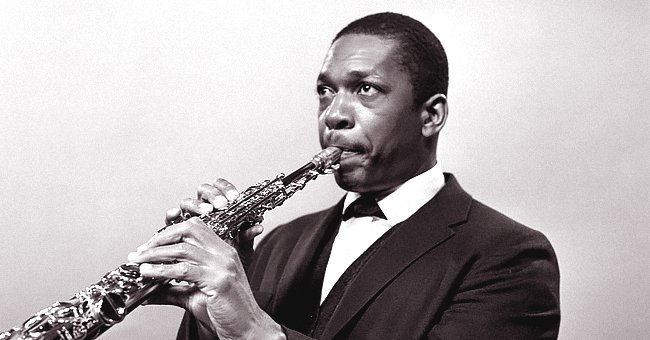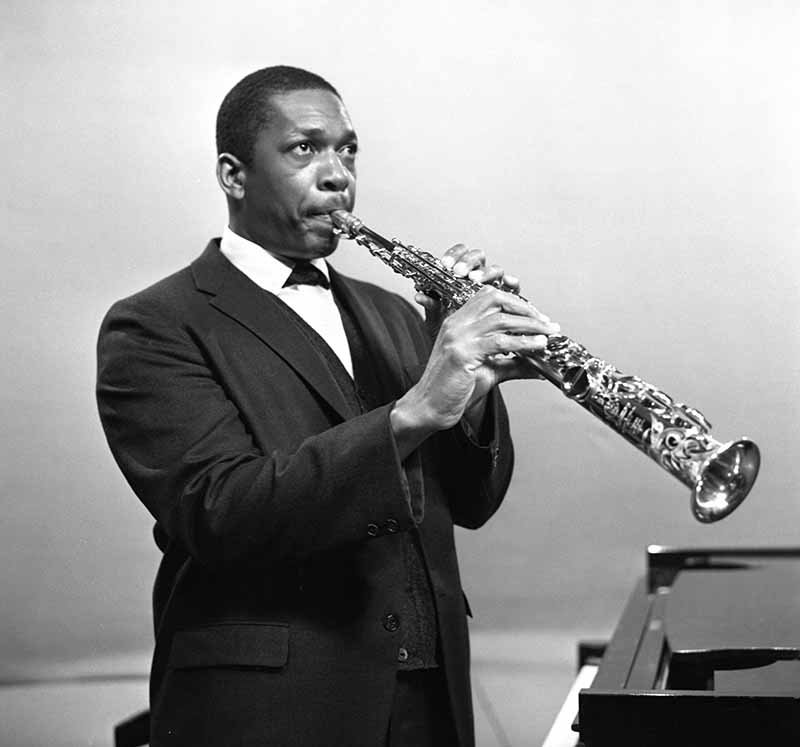
Remembering Jazz Icon John Coltrane – Facts about His Life, Career, and Death
The jazz legend remains one of the most influential musical artists of the 20th century, more than fifty years after his passing at the young age of 40. There was a message in his music that is as relevant as ever in our times.
Late jazz saxophonist and composer John Coltrane rose to fame by playing for big names of the jazz tradition such as Duke Ellington, Dizzy Gillespie, Thelonious Monk, and Miles Davis, making him a key exponent of the genre.
But as big a part Coltrane played in establishing jazz as one of the greatest American creations, he never ceased to push the boundaries of the genre beyond anything recognizable.

John Coltrane. Recording session on March 4, 1963. Studio 41 at 15 Vanderbilt Avenue, CBS studios at Grand Central Terminal. I Image: Getty Images.
EARLY LIFE
Coltrane was born on September 23, 1926, in the small town of Hamlet North Carolina, being exposed to the blues and gospel. The musician belonged to a very religious family, and his father and grandfather were preachers.
These two elements, black roots music, and faith played a key role in the personality and quest of the man Coltrane grew up to be, and as he matured into his art, he increasingly imbued it with spirituality.
Coltrane’s life had an inflection point in 1938, at the age of 12, losing both his parents within months, and leaving him in a critical financial situation that prompted to desperately pursue a career in music, having recently taken up the clarinet.
MOVE TO PHILADELPHIA
As soon as Coltrane graduated from High School in High Point, North Carolina, he decided to move to Philadelphia in 1943, where he briefly studied at the Ornstein School of Music, but this was interrupted by World War II.
Coltrane was called to duty and served in the Navy for a couple of years, returning to Philadelphia in 1946 to continue his studies, this time at the Granoff School of Music.
While serving in Hawaii, Coltrane gathered experience playing live with a quartet of fellow Navy men with whom he even recorded his first record, and upon returning to civilian life, Coltrane started to make connections with other jazz musicians and bands.
WORKING WITH MILES DAVIS
After making himself a name among jazz musicians by playing with different bands in the mid-40s, Coltrane caught the attention of famed trumpeter Dizzy Gillespie, who signed him with his band in 1949.
However, Coltrane abuse of substances in the next decade nearly ended his career as early as 1954, when he was fired from Duke Ellington’s band because of his addictions.
Fortunately, Coltrane managed to put his life in order in time to get his breakthrough, when fellow jazz legend Miles Davis asked him to join the Miles Davis Quintet.
In 1959, Coltrane was to play a key role as a sax player on Davis’ brilliant album “Kind of Blue.” Davis was very influential in Coltrane’s experimental period later.
COLTRANE AS A SOLOIST
According to the late sax player’s official website, it was in 1957 when “Coltrane truly became Coltrane,” for during that year, while playing with Davis, Coltrane developed a clearly recognizable style that was going to make him famous as a soloist.
Coltrane knew he was ready to make his own mark in the jazz world as a soloist, and that year he debuted with the album “Coltrane,” under Prestige.
“Coltrane” was followed by “Blue Train” in 1958, an album that showcased the musician’s gift for composition.
The jazzman eventually found commercial success with his version of Oscar Hammerstein II’s track “My Favorite Things,” which Coltrane included in his album of the same name released in 1961 with Atlantic Records.
However, Coltrane didn’t let his newfound star status be an obstacle for his endless experimentation, and during the rest of the decade he was going to become increasingly “avant-garde,” growing closer to the style dubbed “free jazz.”
DEATH AND LEGACY
In the last year of his life, Coltrane reached the top of his popularity, having become the reference for an entirely new generation of jazzists, and recognized as a game-changer after the release of his acclaimed album “A Love Supreme” in 1965, which remains Coltrane’s best-known album.
Without knowing he didn’t have much time left, Coltrane took his explorations farther than ever, growing more and more atonal and mystical, starting to add chants to his music.
However, the people in his inner circle, including his second wife Alice, also a prominent jazz musician, worried about his frequent pain, and it was only too late when it was found that he was suffering from a terminal disease.
Coltrane passed away on July 17, 1967, at the age of forty, leaving a lasting legacy on musicians and music fans all over the world.
The late sax player enriched American music greatly, drawing from the musical traditions of other places like Africa, Latin America, the Far East, and South Asia.
In 1992, Coltrane was honored with a Lifetime Achievement Grammy award, followed by a Pulitzer Prize recognition in 2007. In 2009, newly elected US President Barack Obama hung a portrait of the musician in the private residence of the White House, with the Head of State writing a note to Coltrane’s relatives declaring himself as his fan.
